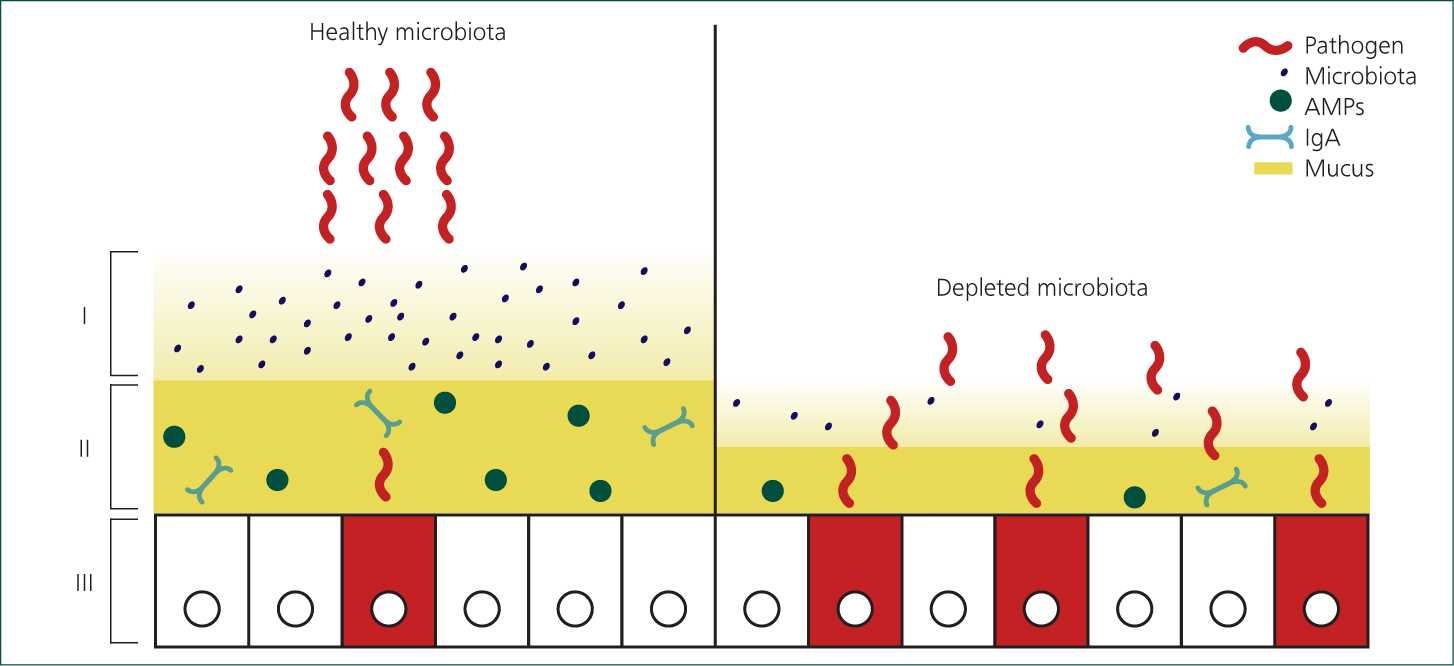Current understanding of the development of the immune system in neonatal calves emphasises the importance of reducing stress and avoiding inappropriate antibiotic use.
At birth, calves are reliant on protection via passive immunity (antibodies from the mother's colostrum) and their own innate immune system (non-specific pathogen recognition), until the development of adaptive immunity (anti-bodies, T and B cells). It can take weeks for adaptive immune responses to reach protective levels. Since maternal antibodies begin to decline from day seven, there is an ‘immunity gap’ which must be covered by the innate immune system. Appropriate early life vaccinations can be used to help bridge this gap.
Innate immunity comprises physical barriers (skin and mucosa), antimicrobial peptides (e.g. lactoferrin), complement, cytokines (e.g. interferons and interleukins) and phagocytic and granulocytic cells. A key first responder is the mucosa — particularly the lining of the alimentary and respiratory tract.
The mucosal epithelial cells are the cornerstone of the mucosal response. They function to maintain tight junctions between cells, interact with commensal flora and export antimicrobial peptides and IgA/IgG.
Mucosal immunity is stimulated and matured by interaction with the microbiota (commensal flora). These organisms can directly recruit and cause maturation of immune cells (T cells, phagocytes) as well as upregulating production of mucus, IgA and AMPs. In the lumen, a healthy microbiotal population will compete with pathogenic organisms for resources. Functions of the microbiota are summarised in Figure 1.

Depletion of the microbiota (dysbiosis) may be a reduction in quantity, quality or complexity. Dysbiosis results in reduced gut immunity and increased susceptibility to enteric pathogens, especially Johne's disease. Dysbiosis is caused by:
- Stress is particularly detrimental to a healthy microbiota and results from many potential neonatal situations: such as dystocia; poor housing; mixing of calves; procedures, including disbudding and castration, and occurrence of disease.
- Good nutrition is key in the maintenance of a high-quality commensal population. Dairy calves reared on milk replacer should be fed adequate quantities of milk (15% bodyweight daily), mixed correctly and from spotlessly clean feeding equipment. Availability of fresh water is a legal requirement from birth. Abrupt dietary change causes severe disruption to microbial populations which can take weeks to re-establish. Therefore, diet changes such as introducing concentrate or weaning should be gradual and with minimal stress. Ideally, small amounts of fresh concentrate should be available from birth allowing calves to pace their own intakes, and calves should be eating at least 1 kg/head/day of concentrate before weaning occurs.
- Antimicrobial use will cause dysbiosis, this is particularly severe with the use of oral boluses. In calves with uncomplicated scour these are likely to make the situation worse and increase recovery time. Microbiota can then take weeks to months to return to a healthy equilibrium. Our message to farmers should be to only use antimicrobials in calves with scour if the calf is systemically ill (depressed, not drinking).
Calf diseases are common and economically important. By enhancing the calf's own ability to fight disease, we can aim to reduce incidence. Calf disease is an important control point in reducing antimicrobial use, by educating farmers about some of the disadvantages of antimicrobial use at an individual calf level, we can work towards achieving our antimicrobial reduction targets.


